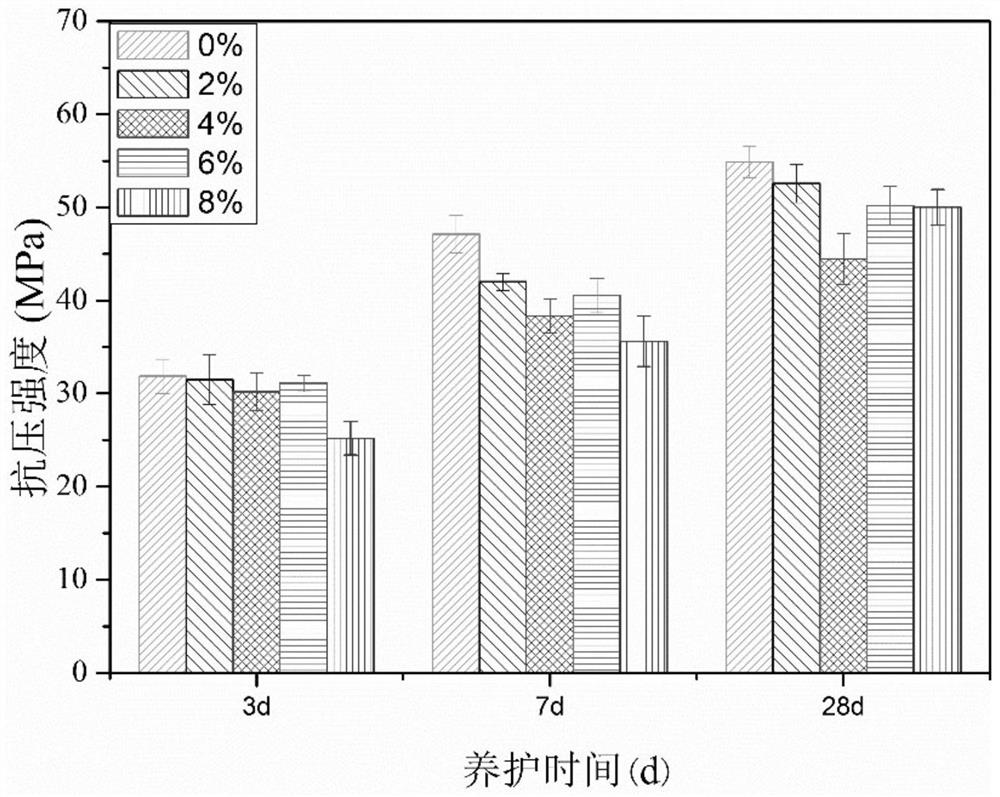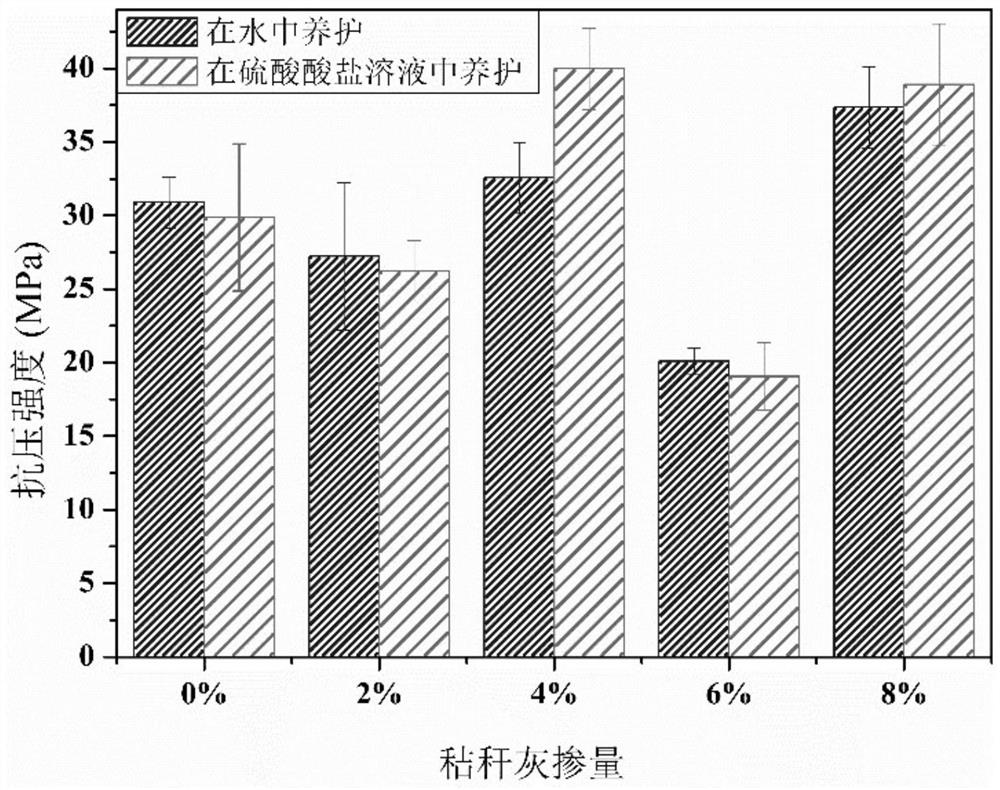Method for preparing nano-modified cement-based biomass materials by calcining straw ash at high temperature
A technology of nano-modification and material materials, which is applied in the field of building materials and can solve the problems of high preparation cost and poor resistance to sulfate erosion
- Summary
- Abstract
- Description
- Claims
- Application Information
AI Technical Summary
Problems solved by technology
Method used
Image
Examples
Embodiment 1
[0040] Plant stalks are crushed and dried to obtain plant powder, which is placed in a ceramic crucible and calcined once at 200°C for 1 hour in a muffle furnace to obtain a sintered powder; the sintered powder prepared above is placed in a ceramic crucible Carry out secondary calcination treatment at 600°C for 6 hours in a muffle furnace to obtain straw ash; in parts by weight, mix 5 parts of acrylic monomer, 0.12 parts of sodium dodecylbenzenesulfonate and 8 parts of deionized water Stir to prepare a monomer emulsion, then add 1 part of nano-silica powder, ultrasonically disperse for 30 minutes at room temperature with a power of 500W, then add 0.1 part of initiator, stir and react at 60°C for 1 hour, cool to room temperature after the reaction, and filter. Wash the solid with absolute ethanol and deionized water in sequence, and dry it at 80°C to obtain a polymer-coated silica material;
[0041] Dissolve 1ml of tetraethyl orthosilicate in 50ml of absolute ethanol, add 3ml o...
Embodiment 2
[0043] Plant stalks are ground and dried to obtain plant powder, which is placed in a ceramic crucible and calcined once at 400°C for 3 hours in a muffle furnace to obtain a sintered powder; the sintered powder prepared above is placed in a ceramic crucible Carry out secondary calcination treatment at 600°C in a muffle furnace for 6 hours to obtain straw ash; in parts by weight, mix 13 parts of acrylic monomer, 0.15 parts of sodium dodecylbenzenesulfonate and 11 parts of deionized water Stir to prepare a monomer emulsion, then add 4 parts of nano-silica powder, ultrasonically disperse at room temperature for 30 minutes at 500W power, then add 0.5 part of initiator, stir and react at 90°C for 2 hours, cool to room temperature after the reaction, filter, Wash the solid with absolute ethanol and deionized water in sequence, and dry it at 80°C to obtain a polymer-coated silica material;
[0044] Dissolve 1ml of tetraethyl orthosilicate in 50ml of absolute ethanol, add 3ml of deion...
Embodiment 3
[0046] Plant stalks are crushed and dried to obtain plant powder, which is placed in a ceramic crucible and calcined once at 200°C for 1.5 hours in a muffle furnace to obtain a sintered powder; the sintered powder prepared above is placed in a ceramic crucible Carry out secondary calcination treatment at 600°C in a muffle furnace for 6 hours to obtain straw ash; in parts by weight, 7 parts of acrylic monomer, 0.13 parts of sodium dodecylbenzenesulfonate and 9 parts of deionized water Mix and stir to prepare a monomer emulsion, then add 2 parts of nano-silica powder, ultrasonically disperse for 30 minutes at room temperature with a power of 500W, then add 0.2 parts of initiator, stir and react at 70°C for 70 minutes, cool to room temperature after the reaction, and filter , washing the solid with absolute ethanol and deionized water in sequence, and drying at 80°C to obtain a polymer-coated silica material;
[0047] Dissolve 1ml of tetraethyl orthosilicate in 50ml of absolute e...
PUM
| Property | Measurement | Unit |
|---|---|---|
| density | aaaaa | aaaaa |
| slump | aaaaa | aaaaa |
Abstract
Description
Claims
Application Information
 Login to View More
Login to View More - R&D Engineer
- R&D Manager
- IP Professional
- Industry Leading Data Capabilities
- Powerful AI technology
- Patent DNA Extraction
Browse by: Latest US Patents, China's latest patents, Technical Efficacy Thesaurus, Application Domain, Technology Topic, Popular Technical Reports.
© 2024 PatSnap. All rights reserved.Legal|Privacy policy|Modern Slavery Act Transparency Statement|Sitemap|About US| Contact US: help@patsnap.com










